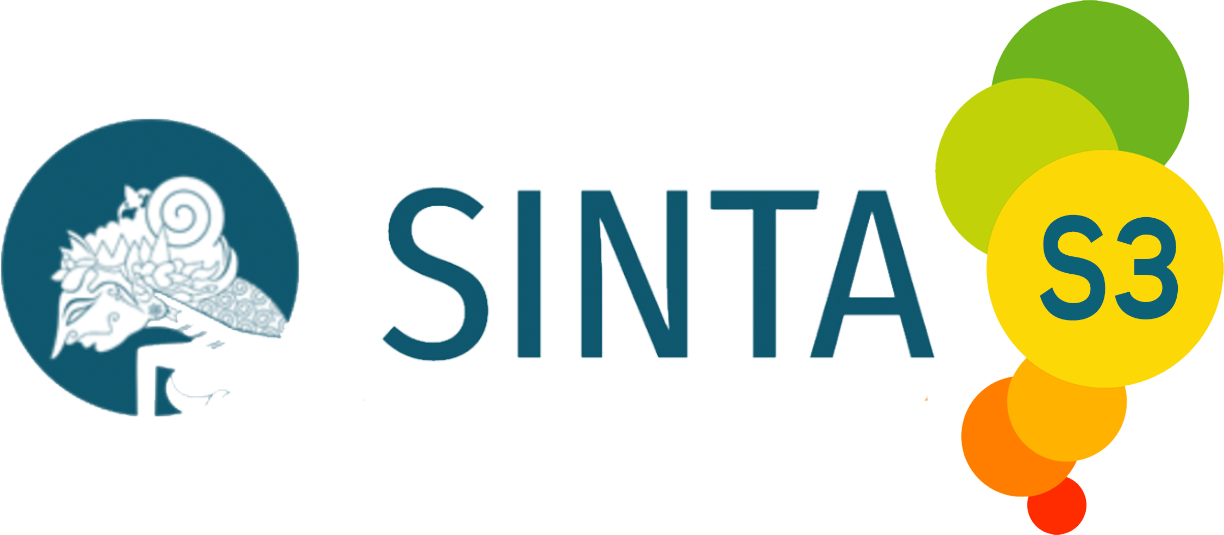Effect of Casein Tablet Made from Goat Milk Yogurt on Liver Histopathological Profile, Dioxin Residue, and Malondialdehyde level in Broiler Exposed to 2,3,7,8-Tetrachlorodibenzo-P-Dioxin
DOI:
https://doi.org/10.21776/ub.jitek.2020.015.03.1Keywords:
Casein product, goat milk yogurt, dioxin, MDA, histopathologyAbstract
2,3,7,8-Tetrachlorodibenzo-p-dioxin (TCDD) is a toxic compound of organic pollutants that is very persistent in the environment. This compound can accumulate in the body through contaminated food and can cause various adverse effects on human health. The purpose of this study was to observe the effect of casein tablets made from goat milk yogurt on Liver histopathological profile, residual TCDD and malondialdehyde (MDA) levels in broiler chicken exposed to 50 ng/mL TCDD. A total of 18 male broiler chickens aged 3 weeks were used in this study and were divided into 3 experimental groups based on a completely randomized design (CRD): 1 (negative control group), 2 (positive control group), 3 (therapeutic group) which were administered by 750 mg of casein from goat milk yogurt for 21 days. TCDD residue and MDA levels in the liver were measured using a UV-Vis spectrophotometer and thiobarbituric acid reactive substances test, respectively. The liver histopathological profile was observed using hematoxylin-eosin staining. The results showed that the administration of casein tablets decreased the level of TCDD residue and MDA by 5.75% and 43.74%, respectively. Moreover, the liver histopathological profile of the therapeutic group was better than that of the positive control group. It is suggested that casein tablet made from goat milk yogurt possesses anti-dioxin and antioxidant capacities.
References
Bamdad, F., Shin, S. H., Suh, J.-W., Nimalaratne, C., & Sunwoo, H. (2017). Anti-inflammatory and antioxidant properties of casein hydrolysate produced using high hydrostatic pressure combined with proteolytic enzymes. Molecules, 22(4), 609. https://doi.org/10.3390/molecules22040609
Binh, N. D., Oanh, N. T. K., & Parkpian, P. (2014). Photodegradation of dioxin in contaminated soil in the presence of solvents and nanoscale TiO 2 particles. Environmental Technology, 35(9), 1121–1132. https://doi.org/10.1080/09593330.2013.861873
Ciftci, O., Disli, O. M., & Timurkaan, N. (2013). Protective effects of protocatechuic acid on TCDD-induced oxidative and histopathological damage in the heart tissue of rats. Toxicology and Industrial Health, 29(9), 806–811. https://doi.org/10.1177/0748233712442735
Geronikaki, A., & Gavalas, A. (2006). Antioxidants and inflammatory disease: synthetic and natural antioxidants with anti-inflammatory activity. Combinatorial Chemistry & High Throughput Screening, 9(6), 425–442. https://doi.org/10.2174/138 620706777698481
Hassoun, E. A., Li, F., Abushaban, A., & Stohs, S. J. (2000). The relative abilities of TCDD and its congeners to induce oxidative stress in the hepatic and brain tissues of rats after subchronic exposure. Toxicology, 145(2–3), 103–113. https://doi.org/10.1016/S0300-483X(99)00221-8
Hayward, D. G., & Bolger, P. M. (2005). Tetrachlorodibenzo-p-dioxin in baby food made from chicken produced before and after the termination of ball clay use in chicken feed in the United States. Environmental Research, 99(3), 307–313. https://doi.org/10.1016/j.envres.2004.11.007
Indraningsih, & Sani, Y. (2015). Detection of dioxins trichloro dibenzo-p-dioxins and trichloro dibenzofurans in beef with gas chromatography tandem mass spectrometry. Jurnal Ilmu Ternak Dan Veteriner, 19(4). https://doi.org/10.14334/jitv.v19i4.1098
Kan, C. A., & Meijer, G. A. L. (2007). The risk of contamination of food with toxic substances present in animal feed. Animal Feed Science and Technology, 133(1–2), 84–108. https://doi.org/10.1016/j.anifeedsci.2006.08.005
Karami, M., Khansari, M. G., Rezayat, M., Zangi, M. B. M., Abdollahi, M., & Sabzevari, O. (2001). Histopathological study of tcdd by isolated rat liver perfusion system. Medical Journal Of The Islamic Republic Of Iran (MJIRI), 15(6), 55–60.
Neha, A., & Tarun, G. (2012). Review on casein production and casein based nano-formulations. International Research Journal of Pharmacy, 3(1), 41–45.
Nuttall, S. L., Kendal, M. J., & Martin, U. (1999). Antioxidant therapy for the prevention of cardiovascular disease. International Journal of Medicine, 92(5), 239–244. https://doi.org/10. 1093/qjmed/92.5.239
Padaga, M., Erika P. H, A., & Irawan, M. (2018). Efek antioksidatif kasein yogurt susu kambing terhadap pencegahan reprotoksik pada hewan model rattus norvegicus yang dipapar 2, 3, 7, 8 Tetrachlorinedibenzo-P-Dioksin (TCDD). Jurnal Ilmu Dan Teknologi Hasil Ternak, 13(2), 72–80. https://doi.org/10.21776/ub.jitek.2018.013.02.1
Pemberthy, D., Quintero, A., Martrat, M. G., Parera, J., Ãbalos, M., Abad, E., & Villa, A. L. (2016). Polychlorinated dibenzo-p-dioxins, dibenzofurans and dioxin-like PCBs in commercialized food products from Colombia. Science of The Total Environment, 568, 1185–1191. https://doi.org/10.1016/j.scitote nv.2016.04.113
Schecter, A., Birnbaum, L., Ryan, J. J., & Constable, J. D. (2006). Dioxins: An overview. Environmental Research, 101(3), 419–428. https://doi.org/10. 1016/j.envres.2005.12.003
Setianingrum, A., & Padaga, M. C. (2019). Antioxidant activity of goat milk yogurt casein on dioxin intoxicated rat liver function. Journal Veterinary Biomedical and Clinical, 1(1), 26–32.
Singh, R. P., Chidambara Murthy, K. N., & Jayaprakasha, G. K. (2002). Studies on the Antioxidant Activity of Pomegranate ( Punica granatum ) Peel and Seed Extracts Using in Vitro Models. Journal of Agricultural and Food Chemistry, 50(1), 81–86. https://doi.org/10.1021/jf010865b
Swarayana, I. M. I., Sudira, I. W., & Berata, I. K. (2012). Perubahan Histopatologi hati mencit (mus musculus) yang diberikan ekstrak daun ashitaba (Angelica keiskei). Buletin Veteriner Udayana, 4(2).
Triebig, G., Werle, E., Papke, O., Heim, G., Broding, C., & Ludwig, H. (1998). Effects of dioxins and furans on liver enzymes, lipid parameters, and thyroid hormones in former thermal metal recycling workers. Environmental Health Perspectives, 106, 697. https://doi.org/10.2307/3433822
Turkez, H., & Geyikoglu, F. (2011). The effect of laurel leaf extract against toxicity induced by 2,3,7,8-Tetrachlorodibenzo-P-Dioxin in cultured rat hepatocytes. Archives of Industrial Hygiene and Toxicology, 62(4), 309–315. https://doi.org/10.2478/10004-1254-62-2011-2118
Türkez, H., Yousef, M. I., & Geyikoglu, F. (2010). Propolis prevents aluminium-induced genetic and hepatic damages in rat liver. Food and Chemical Toxicology, 48(10), 2741–2746. https://doi.org/10.1016/j.fct.2010.06.049
Van den Berg, M., De Jongh, J., Poiger, H., & Olson, J. R. (1994). The toxicokinetics and metabolism of Polychlorinated Dibenzo- p -Dioxins (PCDDs) and Dibenzofurans (PCDFs) and their relevance for Toxicity. Critical Reviews in Toxicology, 24(1), 1–74. https://doi.org/10.3109/104084 49409017919
Verruck, S., Dantas, A., & Prudencio, E. S. (2019). Functionality of the components from goat’s milk, recent advances for functional dairy products development and its implications on human health. Journal of Functional Foods, 52, 243–257. https://doi.org/10.1016/j.jff.2018.11.017
Downloads
Published
Issue
Section
License
Copyright (c) 2020 Nur Aeni, Arie Srihardyastutie, Chanif Mahdi

This work is licensed under a Creative Commons Attribution-NonCommercial 4.0 International License.
Authors who publish with this journal agree to the following terms:
- Authors retain copyright and grant the journal right of first publication with the work simultaneously licensed under a Creative Commons Attribution License that allows others to share the work with an acknowledgement of the work's authorship and initial publication in this journal.
- Authors are able to enter into separate, additional contractual arrangements for the non-exclusive distribution of the journal's published version of the work (e.g., post it to an institutional repository or publish it in a book), with an acknowledgement of its initial publication in this journal.
- Authors are permitted and encouraged to post their work online (e.g., in institutional repositories or on their website) prior to and during the submission process, as it can lead to productive exchanges, as well as earlier and greater citation of published work (See The Effect of Open Access).















